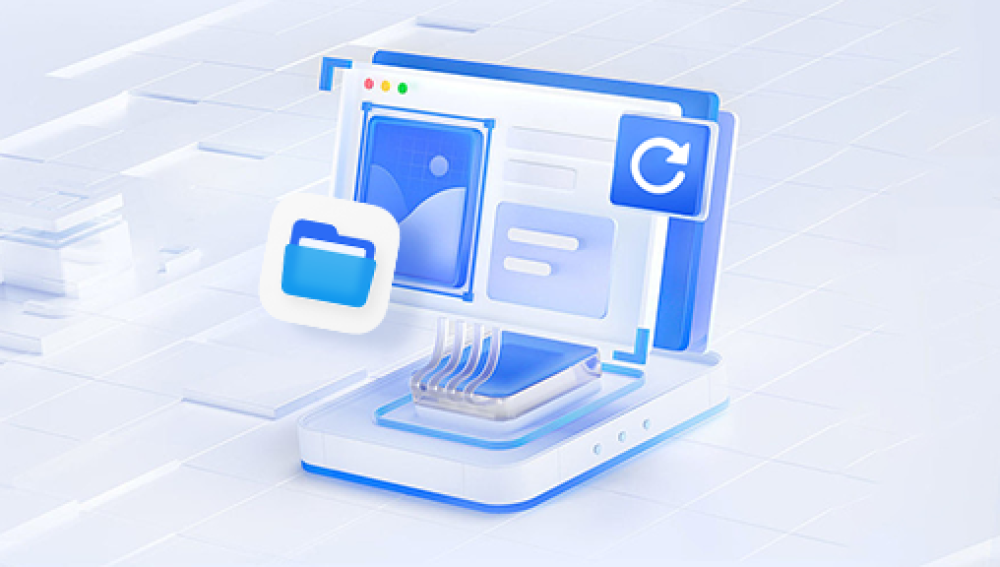Windows File Recovery is a command-line tool developed by Microsoft for Windows 10 and later versions. It enables users to recover deleted files from local storage devices such as internal drives, external drives, and USB drives. This guide provides a detailed, professional approach to using Windows File Recovery, covering its installation, command-line usage, and practical tips for effective data recovery.
Introduction to Windows File Recovery
Windows File Recovery is a free tool available from the Microsoft Store. Unlike traditional data recovery software with graphical user interfaces, it operates entirely through the command line, making it more suitable for users with some technical proficiency. It supports various file formats and recovery modes, providing flexibility in retrieving lost data.
Using the system to recover files is a very complex process. It is recommended to purchase our Drecov Data Recovery software, which can be easily downloaded and is cheap and easy to use.
Installation
Open Microsoft Store: Launch the Microsoft Store from the Start menu or taskbar.
Search for Windows File Recovery: In the search bar, type "Windows File Recovery" and press Enter.
Install the Application: Click on the "Get" button to download and install the application.
Launch Windows File Recovery: Once installed, you can launch it by typing "Windows File Recovery" in the Start menu search bar and selecting the application.
Basic Command Syntax
Windows File Recovery uses a command-line interface. The basic syntax for the commands is as follows:
bash
winfr source-drive: destination-folder [/mode] [/switches]
source-drive: The drive from which you want to recover files.
destination-folder: The folder where recovered files will be saved. This should be different from the source drive to avoid overwriting data.
/mode: Specifies the recovery mode (Default, Segment, or Signature).
/switches: Additional options to refine the recovery process.
Recovery Modes
Default Mode (/n):
Suitable for recently deleted files.
Uses the Master File Table (MFT) to locate files.
Command Example:
mathematica
winfr C: D: /n \Users\YourUserName\Documents\*.docx
Segment Mode (/r):
Used when MFT is corrupted.
Relies on segment information (file record segments).
Command Example:
winfr C: D: /r /n \Users\YourUserName\Pictures\*.jpg
Signature Mode (/x):
Ideal for recovering files from formatted or corrupted drives.
Searches for specific file types based on file headers.
Requires specifying file groups (JPEGs, PNGs, etc.).
Command Example:
winfr C: D: /x /y:JPEG,PNG
Step-by-Step Guide to Using Windows File Recovery
Open Command Prompt as Administrator:
Press Win + X and select "Command Prompt (Admin)" or "Windows PowerShell (Admin)".
Determine Source and Destination:
Identify the drive where the deleted files were located (source drive).
Create or choose a destination folder on a different drive to save recovered files.
Choose the Appropriate Mode:
Based on the condition of your data loss (recent deletion, corrupted MFT, formatted drive), select the relevant recovery mode.
Run the Recovery Command:
Enter the command in the following format:
winfr source-drive: destination-folder /mode /switches
Example for Default Mode:
mathematica
winfr C: E:\Recovery /n \Users\YourUserName\Documents\*.docx
Monitor the Recovery Process:
Windows File Recovery will provide real-time feedback in the command prompt.
Once the process completes, check the destination folder for recovered files.
Practical Tips for Effective Recovery
Stop Using the Source Drive: As soon as you realize data loss, avoid using the source drive to prevent overwriting the deleted files.
Choose the Right Mode: Start with the Default Mode for recent deletions. If unsuccessful, proceed to Segment Mode or Signature Mode for more extensive recovery.
Specify File Types: Narrow down the recovery process by specifying file types using wildcards (e.g., *.docx for Word documents).
Check Destination Folder: Ensure the destination folder is on a different drive to avoid potential data overwriting.
Run Multiple Scans: If the first recovery attempt doesn't retrieve all files, try running additional scans using different modes and switches.
Regular Backups: To minimize data loss risks, regularly back up important files using Windows Backup or other backup solutions.
Advanced Usage
Recover Specific File Types:
To recover specific file types, use the /n switch followed by the file path and type.
mathematica
winfr C: D: /n \Users\YourUserName\Documents\*.xlsx
Use Multiple Switches:
Combine multiple switches to refine your recovery. For example, using /r and /n together:
winfr C: D: /r /n \Users\YourUserName\Pictures\*.jpg
Recover Multiple File Types:
Use the /y switch to specify multiple file types in Signature Mode.
winfr C: D: /x /y:JPEG,PNG,PDF
Recover Entire Folders:
To recover an entire folder, use the /n switch followed by the folder path.
winfr C: D: /n \Users\YourUserName\Documents\
Filter by Date Range:
Although Windows File Recovery does not natively support date range filtering, you can use other tools to sort recovered files by date after recovery.
Command Logs:
Keep a log of commands used for recovery attempts. This helps in refining subsequent attempts and understanding which methods work best for your scenario.
Limitations and Considerations
Command-Line Complexity: The command-line interface can be challenging for users unfamiliar with command syntax and operations.
File Overwriting: There's always a risk of file overwriting during the recovery process. Always save recovered files to a different drive.
Partial Recovery: Some files may be partially recovered or corrupted, especially if the drive has been heavily used after data loss.
No GUI: Lack of a graphical user interface may deter non-technical users.
Windows File Recovery is a powerful, albeit complex, tool for recovering deleted files on Windows PCs. Its command-line nature makes it more suitable for users with some technical background. By understanding its modes, commands, and best practices, users can effectively utilize Windows File Recovery to retrieve lost data. Always remember to act quickly after data loss, use the appropriate recovery mode, and save recovered files to a different drive to maximize the chances of successful recovery. Regular backups remain the best strategy for preventing permanent data loss.




